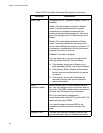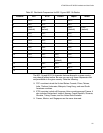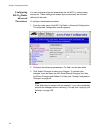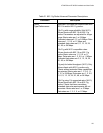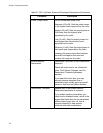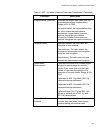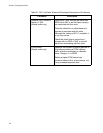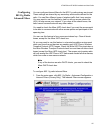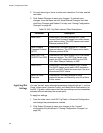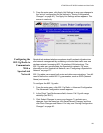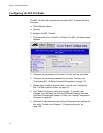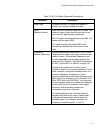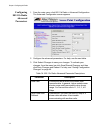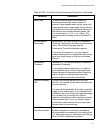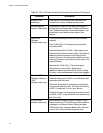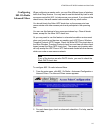
Chapter 4: Configuring the Radios
108
2. For each frame type, check or clear each check box. For help, see the
next table.
3. Click Submit Changes to save your changes. To activate your
changes, from the menu bar click Save/Discard Changes, and then
click Save Changes and Reboot. For help, see “Saving Configuration
Changes” on page 46.
Applying Hot
Settings
You can “hot set” some advanced parameters (marked with an *), such as
Power Output Level, Antenna Control, and Mixed Mode Performance, for
the 802.11g radio, which means that the new settings can be immediately
activated without rebooting the access point.
To apply hot settings
1. From the main menu, click 802.11g Radio > Advanced Configuration
and change the parameters as needed.
2. Click Submit Changes to save your changes to the “current”
configuration file (as defined in “Saving Configuration Changes” on
page 46).
Table 32. 802.11g Radio Inbound Filter Descriptions
Parameter Description
Allow IAPP Determines if this radio accepts IAPP (Inter
Access Point Protocol) frames from other access
point station radios. The IAPP frames must match
Ethernet protocol 875c.
Allow Wireless
Transport Protocol
(WTP)
Determines if this radio accepts WTP frames
from end devices. The WTP frames must match
Ethernet protocol 875b.
Allow UDP Plus
(UDP/IP Port 5555)
Determines if this radio accepts UDP Plus frames
from end devices. The UDP Plus frames must
match the UDP network port 5555 on the DCS
30X, Allied Telesyn Gateway, or ARP.
Allow DHCP Determines if this radio accepts DHCP frames.
The DHCP frames must match UDP destination
port 67 and ARP. Check this check box if the end
devices are DHCP clients.
Allow All Other
Protocols
Determines if this radio accepts all other
protocols that are not filtered by one of the filters
in this screen.



